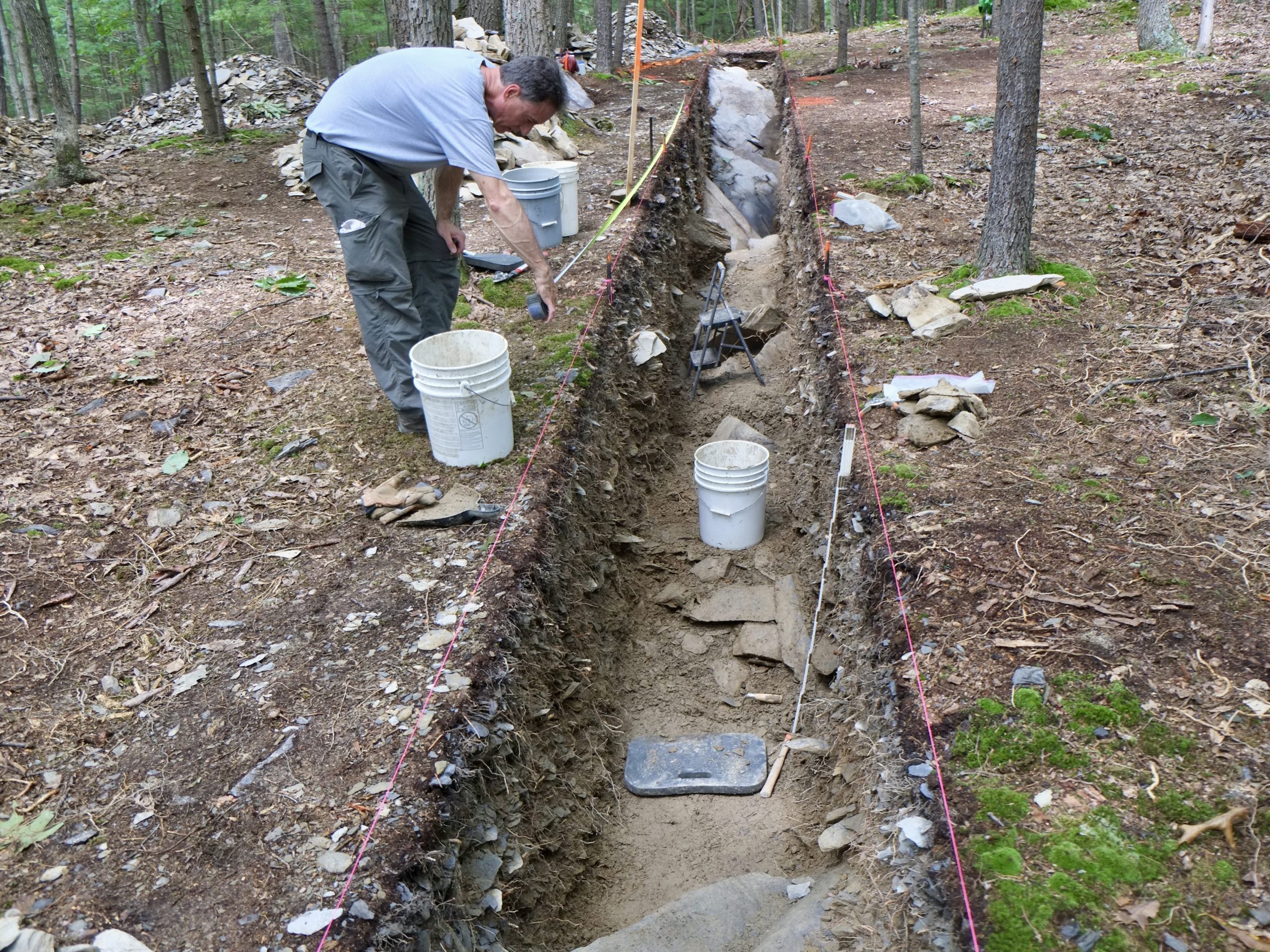On a wooded slope above Tom’s Creek sits a quarry that bears its name, though you might not know one was even present if you didn’t know how to read the landscape like an archaeologist. Upon studying the ground, one can start to see small depressions where quarry pits once existed, which hint at underlying archaeological deposits that contain a record of people gathering stone at the site for thousands of years. The site consists of a quarry and adjacent workshop areas, where quarried material was further reduced or worked into tools. It is located in the South Mountain area of South-Central Pennsylvania. The material extracted at the site is metarhyolite (also known as rhyolite)—a type of metamorphosed volcanic rock that is usually grayish-blue to purple in color. Carbon dating of charcoal from the site indicates the quarry was in use from at least 3200 B.C. through A.D. 575.
Archaeologists Robert Bodnar and Hettie Ballweber and geographer Paul Marr, began an archaeological investigation at the site in 2021. A trench was excavated across a portion of the quarry and smaller test units were excavated in one workshop area. The project was assisted by a team of specialists in archaeology, geology, primitive technology, and soil science, which uncovered significant evidence of modification to lithic materials in the quarry, diagnostic projectile points, hammerstones, and tool preforms. A few of the recovered artifacts were not made of local materials, suggesting people traveled to this quarry from other areas or that trading was occurring across the region. Bodnar’s work also involved an experimental archaeology team that explored the use of fire for “spalling,” or breaking off pieces of rock from a larger base. The effectiveness of these experiments may explain why charcoal was found in various portions of the excavations.

Phenocrysts in the rhyolite and artifact forms from the quarry excavations were compared to those at the Smithsonian from an 1892 excavation.
Photo credits: LEFT, CENTER: Robert Bodnar; RIGHT: Smithsonian Institution
Based on archival research and the excavations, Bodnar believes the site is likely a quarry site that was first investigated by American anthropologist and explorer William Henry Holmes in 1892. Attributes of the stone artifacts recovered from recent excavations match those Holmes recovered. On a side-by-side comparison, the material used and shapes of the tool preforms are the same as Holmes recorded, and the phenocrysts, which are small inclusions of quartz in the rhyolite, appear to be identical.

A 3-D model of a hammerstone tool kit that was discovered at Tom’s Creek Quarry.
Photo credit: Direct Dimensions
One particularly significant and rare find from the site was an intact hammerstone tool kit cache. This was found in the workshop area, and consisted of four hammerstones that were placed on top of a large pedestal rock made of rhyolite. This cache was found near a pit feature that contained wood charcoal dating to A.D. 210. Different sizes and weights of hammerstones would be necessary for different stages of tool production. This cache, as well as the trench, were 3-D modeled for educational purposes.

Property owner Constance Alering and her dog, Cricket, hang out with the crew during site testing and excavation at Tom’s Creek Quarry.
Photo credit: Paul Marr
The property owner, Constance Alering, and her dog, Cricket, could be found at the site supporting the crew and sharing her knowledge of local history. She said she is thrilled with the identification of the site on her property. Recognizing the importance of the site, she agreed to sell 10 acres to the Conservancy to ensure that the site is protected for future research. The Tom’s Creek Quarry Site will be important for future researchers in their quest for a better understanding of thousands of years of Native quarrying and the movement of lithic materials through trade networks.




